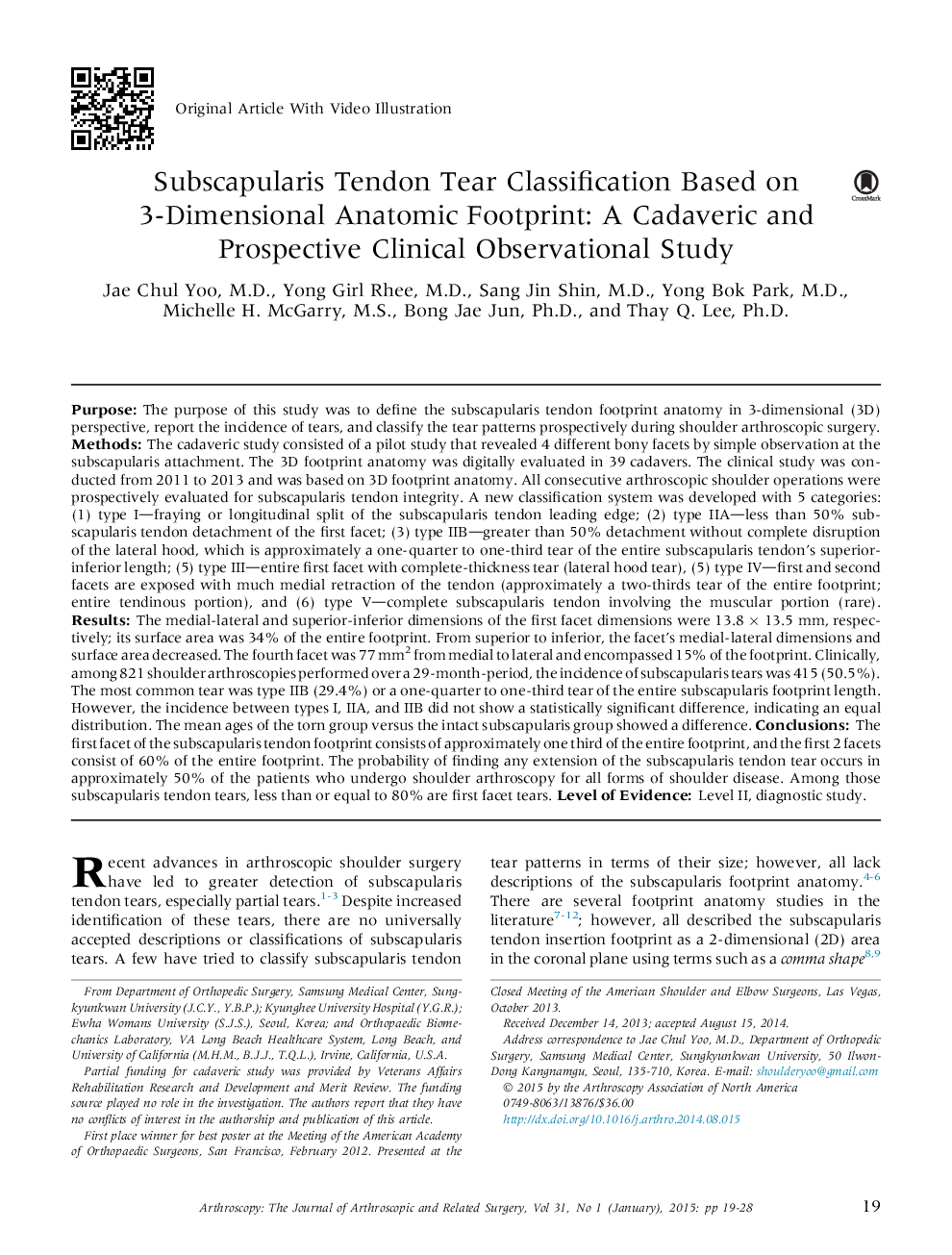| کد مقاله | کد نشریه | سال انتشار | مقاله انگلیسی | نسخه تمام متن |
|---|---|---|---|---|
| 4042720 | 1603488 | 2015 | 10 صفحه PDF | دانلود رایگان |
PurposeThe purpose of this study was to define the subscapularis tendon footprint anatomy in 3-dimensional (3D) perspective, report the incidence of tears, and classify the tear patterns prospectively during shoulder arthroscopic surgery.MethodsThe cadaveric study consisted of a pilot study that revealed 4 different bony facets by simple observation at the subscapularis attachment. The 3D footprint anatomy was digitally evaluated in 39 cadavers. The clinical study was conducted from 2011 to 2013 and was based on 3D footprint anatomy. All consecutive arthroscopic shoulder operations were prospectively evaluated for subscapularis tendon integrity. A new classification system was developed with 5 categories: (1) type I—fraying or longitudinal split of the subscapularis tendon leading edge; (2) type IIA—less than 50% subscapularis tendon detachment of the first facet; (3) type IIB—greater than 50% detachment without complete disruption of the lateral hood, which is approximately a one-quarter to one-third tear of the entire subscapularis tendon's superior-inferior length; (5) type III—entire first facet with complete-thickness tear (lateral hood tear), (5) type IV—first and second facets are exposed with much medial retraction of the tendon (approximately a two-thirds tear of the entire footprint; entire tendinous portion), and (6) type V—complete subscapularis tendon involving the muscular portion (rare).ResultsThe medial-lateral and superior-inferior dimensions of the first facet dimensions were 13.8 × 13.5 mm, respectively; its surface area was 34% of the entire footprint. From superior to inferior, the facet's medial-lateral dimensions and surface area decreased. The fourth facet was 77 mm2 from medial to lateral and encompassed 15% of the footprint. Clinically, among 821 shoulder arthroscopies performed over a 29-month-period, the incidence of subscapularis tears was 415 (50.5%). The most common tear was type IIB (29.4%) or a one-quarter to one-third tear of the entire subscapularis footprint length. However, the incidence between types I, IIA, and IIB did not show a statistically significant difference, indicating an equal distribution. The mean ages of the torn group versus the intact subscapularis group showed a difference.ConclusionsThe first facet of the subscapularis tendon footprint consists of approximately one third of the entire footprint, and the first 2 facets consist of 60% of the entire footprint. The probability of finding any extension of the subscapularis tendon tear occurs in approximately 50% of the patients who undergo shoulder arthroscopy for all forms of shoulder disease. Among those subscapularis tendon tears, less than or equal to 80% are first facet tears.Level of EvidenceLevel II, diagnostic study.
Journal: Arthroscopy: The Journal of Arthroscopic & Related Surgery - Volume 31, Issue 1, January 2015, Pages 19–28
